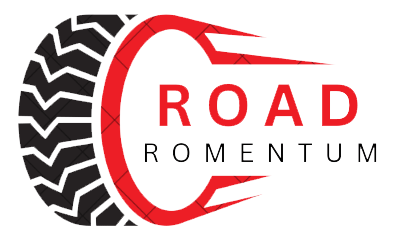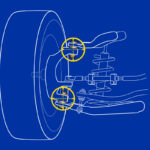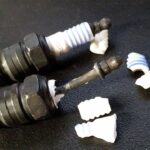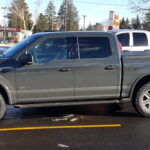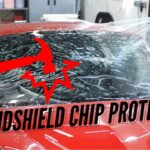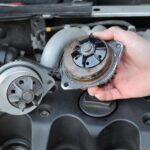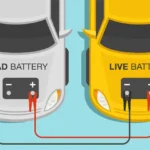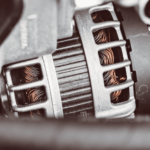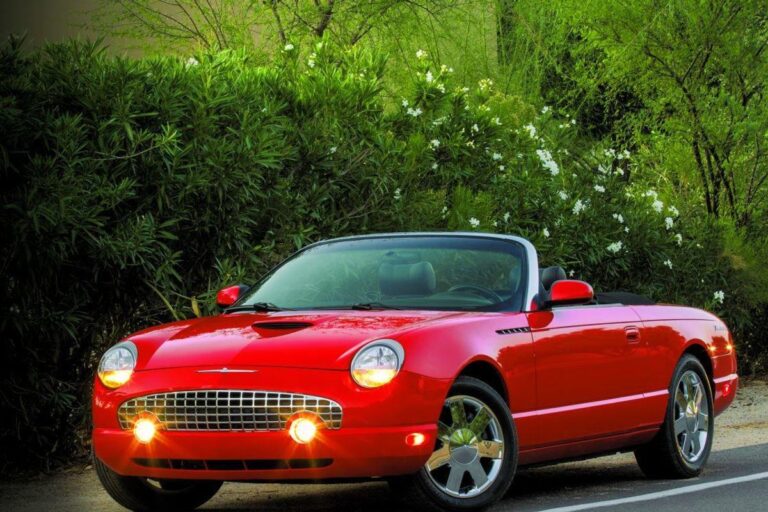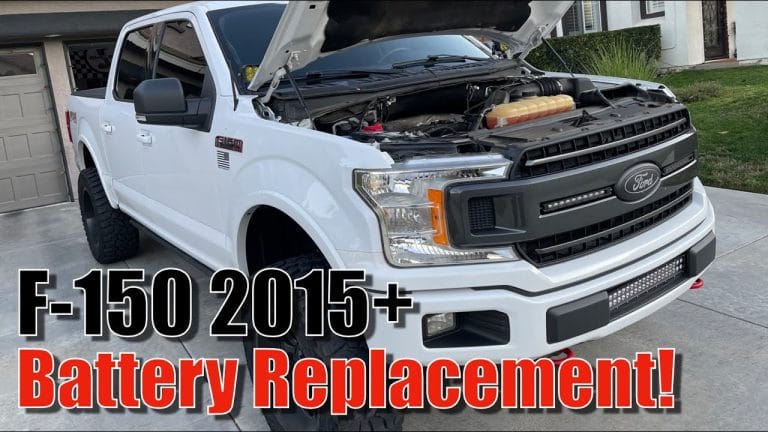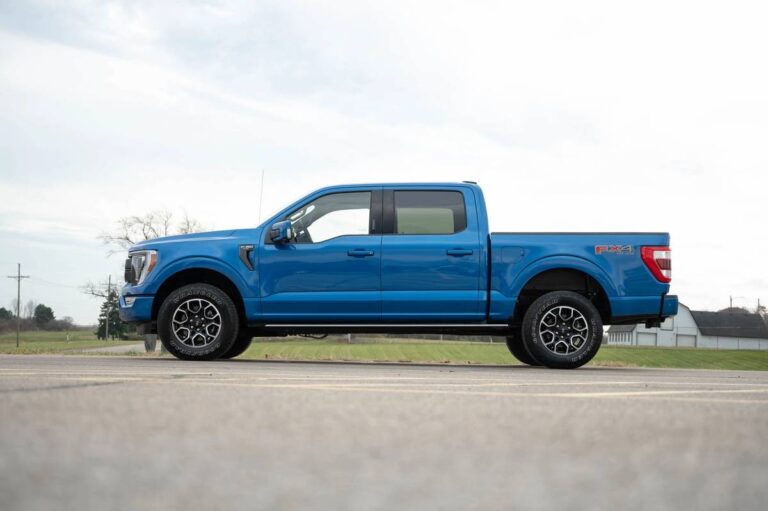What is a Cam Phaser in a F150? Unraveling the Mystery
A Cam Phaser in an F150 is a component that adjusts the timing of the camshafts in the engine to optimize performance. It can go bad and cause poor acceleration, rough engine running, and tapping or rattling noises at idle.
Cam phasers are a common failure point in modern engines and can be costly to replace. The Cam Phaser in an F150 is a crucial component that plays a significant role in optimizing engine performance. It is responsible for adjusting the timing of the camshafts, ensuring efficient fuel combustion and power delivery.
However, like any other mechanical part, the Cam Phaser can go bad, leading to a range of issues that affect the overall performance of the vehicle. Symptoms of a failing Cam Phaser include poor acceleration, rough engine running, and tapping or rattling noises at idle. These problems can be detrimental to the overall driving experience and may indicate the need for a replacement. We will explore what exactly a Cam Phaser is, its function, common symptoms of a failing one, and the potential cost of replacement.

Credit: www.youtube.com
What Is A Cam Phaser?
A cam phaser is an integral component of the Variable Valve Timing (VVT) system found in many modern engines. It acts as the heart of the VVT system, responsible for adjusting the position of the camshafts to control the engine’s valve timing. While cam phasers play a crucial role in optimizing engine performance, they are also known to be a common failure point in certain vehicles, such as the Ford F150.
Definition
A cam phaser, also known as a camshaft phaser, is a device that helps to control the valve timing of an engine. It is designed to alter the position of the camshaft(s) in response to changing driving conditions, allowing for optimal valve timing and improved engine performance.
Function
The primary function of a cam phaser is to adjust the timing of the camshafts in relation to the crankshaft. By doing so, it ensures that the intake and exhaust valves open and close at the right moments, maximizing power output and fuel efficiency.
The cam phaser achieves this by utilizing a hydraulic actuator, which is controlled by the engine’s computer system. The computer sends signals to the actuator, adjusting oil flow to the phaser and changing the position of the camshaft(s) accordingly.
By altering the valve timing, the cam phaser can optimize the engine’s performance across different RPM ranges. This allows for better low-end torque, improved high-end power, and increased fuel efficiency.
However, despite their important role, cam phasers can experience issues over time, especially in vehicles like the F150. Wear and tear can cause the phaser to make rattling or clicking noises, leading to reduced engine performance and potential damage if left unaddressed.
Furthermore, there are cases where the phaser’s keeper pin wears out, causing it to become stuck in a certain position. This can lead to poor acceleration, rough engine operation, and other symptoms that indicate a failing cam phaser.
In summary, understanding what a cam phaser is and how it functions is crucial for vehicle owners, particularly those with a Ford F150. If you suspect any issues with your cam phaser, it is essential to address them promptly to ensure optimal engine performance and prevent further damage.
Symptoms Of Cam Phaser Failure
One of the key symptoms of cam phaser failure in an F150 is poor acceleration. When your cam phasers are not functioning properly, you may notice a lack of power and sluggishness when you press down on the accelerator. This can be frustrating, especially when you need to accelerate quickly or overtake other vehicles on the road.
Rough Engine Performance
Another telltale sign of cam phaser failure is rough engine performance. If your engine is running unevenly or it feels like it’s struggling, it could be due to faulty cam phasers. The variable valve timing system relies on the proper operation of the cam phasers to adjust the valve timing for optimal performance. When they fail, it can lead to a rough engine idle, misfires, and overall decreased engine performance.
Tapping Or Rattling Noise At Idle
When your cam phasers start to fail, you may hear a distinct tapping or rattling noise at idle. This noise is more prominent when the engine is hot and can be a sign of worn or damaged cam phasers that are not functioning as they should. It’s important to address this issue as soon as possible to prevent further damage to the engine.
Overall, if you experience poor acceleration, rough engine performance, or hear a tapping or rattling noise at idle, it’s likely a sign of cam phaser failure in your F150. It’s essential to have this issue diagnosed and repaired by a qualified mechanic to avoid further damage to your engine and ensure your truck performs at its best.
Causes Of Cam Phaser Failure
A cam phaser in an F150 is a component that adjusts the engine’s valve timing. When it fails, it can lead to poor acceleration, rough engine performance, and a tapping or rattling noise at idle. Excessive wear inside the phaser and in the engine are the main causes of cam phaser failure.
When it comes to cam phaser failure in an F150, there are two main reasons why phasers fail – wear inside the cam phasers and wear in the engine. In most cases, it’s a combination of both factors that leads to excessive phaser noise and potential damage to the engine.
Wear Inside The Cam Phasers
One of the primary causes of cam phaser failure is wear inside the phasers themselves. Over time and with continuous use, the internal components of the cam phasers can experience wear and tear. This wear can limit the phasers’ ability to properly control the oil flow and the variable cam timing. Without proper control, the engine’s performance can be compromised, leading to poor acceleration, rough running, and erratic idling.
Wear In The Engine
In addition to wear inside the cam phasers, wear in the engine can also contribute to cam phaser failure. The engine’s components, such as the camshafts and timing chain, can wear down over time. This wear can affect the overall functioning of the cam phasers and their ability to adjust the engine’s valve timing accurately. When the valve timing is out of sync, it can result in engine performance issues, reduced fuel economy, and potentially cause other parts of the engine to malfunction.
To prevent cam phaser failure, it is essential to address any maintenance issues promptly. Regular inspections, oil changes, and adhering to the manufacturer’s recommended maintenance schedule can help prolong the lifespan of the cam phasers and the engine as a whole.

Credit: breakingandentering.net
Repair Options And Costs
Cam phasers in a F150 can cause poor acceleration, rough engine performance, and a tapping or rattling noise at idle when the engine is hot. Cam phasers are responsible for adjusting the engine’s valve timing, but they can be a common failure point in modern engines.
Replacement costs will vary depending on the specific repair needed.
The cam phaser is a crucial component in the engine of a Ford F150. When it malfunctions, it can lead to poor acceleration, rough engine performance, and a tapping or rattling noise at idle. Understanding repair options and costs is essential for addressing this issue effectively.
Replacement Cost
Replacing a cam phaser in an F150 can vary in cost depending on several factors, including the model year, the extent of the damage, and the labor rates of the repair shop. On average, the cost can range from $500 to $1,500. It is recommended to consult with a trusted mechanic or Ford dealership to get an accurate estimate for your specific situation.
Updated Cam Phaser Design
Ford has made improvements to the design of cam phasers in newer F150 models to address the known issues and enhance their longevity. The updated cam phasers are built to be more durable and reliable, reducing the likelihood of future failures. If you are considering a cam phaser replacement, it may be beneficial to opt for the updated design to minimize the risk of future issues.
Longevity Of The Repair
When a cam phaser is replaced with a new or updated design, it can significantly extend the lifespan of the repair. With proper maintenance and regular oil changes, the newly installed cam phaser can last for many years, providing reliable performance and smooth engine operation. However, it is essential to follow the manufacturer’s recommended maintenance schedule to ensure the longevity of the repair.
Credit: h5oxkc14ny13.ptsk-tver.ru
Frequently Asked Questions For What Is A Cam Phaser In A F150
What Happens When Cam Phasers Go Bad?
Cam phasers going bad can result in poor acceleration, rough engine running, and a tapping or rattling noise when the engine is hot. These symptoms may indicate wear inside the cam phasers or the engine itself, causing excessive phaser noise.
It is important to address these issues to prevent further engine damage.
What Is The Problem With The Cam Phasers On A Ford F150?
The problem with the cam phasers on a Ford F150 is that they can wear out, causing poor acceleration and rough engine performance. When the engine is hot, you may hear a tapping or rattling noise at idle. This issue is typically due to wear inside the cam phasers and the engine.
The variable cam timing is affected, and the oil cannot be properly controlled.
What Are The Symptoms Of The 3.5 Ecoboost Cam Phaser Failure?
Symptoms of 3. 5 EcoBoost cam phaser failure include poor acceleration, rough engine running, and a tapping or rattling noise at idle when the engine is hot. These symptoms may also be present in other situations but are more common in cases of cam phaser failure.
What Causes Ford Cam Phasers To Fail?
Ford cam phasers can fail due to wear inside the phasers and in the engine. This results in excessive phaser noise and the oil not being properly controlled, causing the computer to lose control of the variable cam timing.
Conclusion
A cam phaser plays a crucial role in adjusting a vehicle’s valve timing. When cam phasers go bad, you may experience poor acceleration, rough running engine, and a tapping or rattling noise at idle. The failure of cam phasers can be attributed to wear inside the phasers and the engine itself.
Fortunately, there are replacement options available to fix this common issue. If you notice any of these symptoms, it’s important to address the cam phaser problem to avoid further engine damage.
